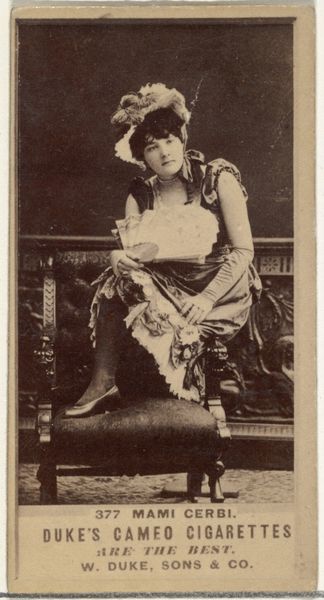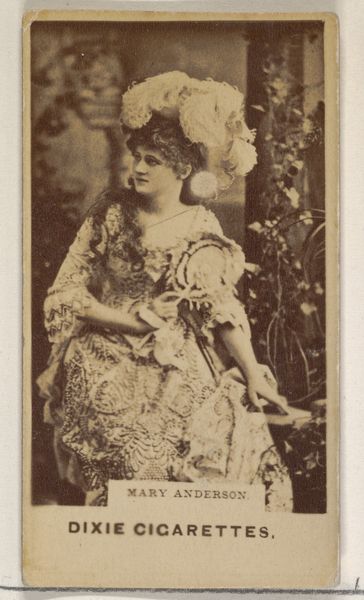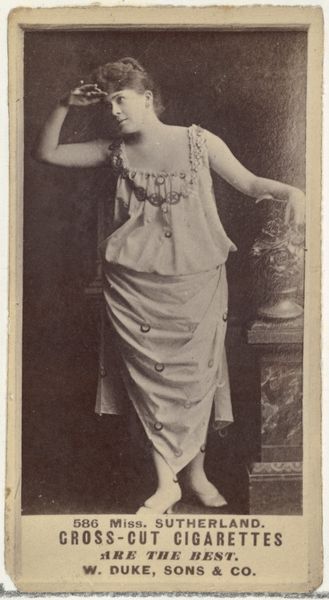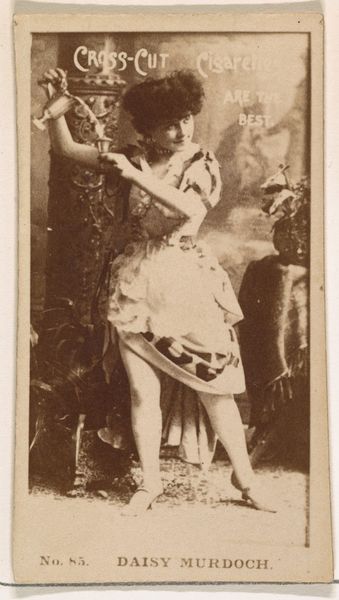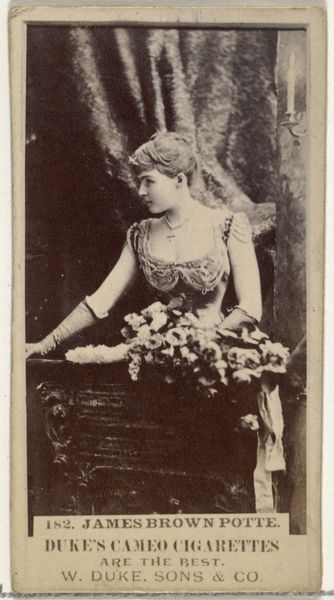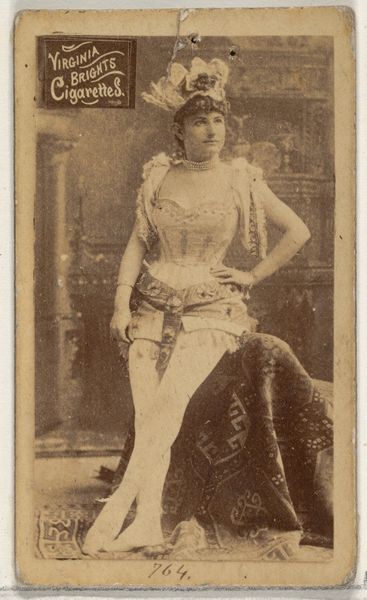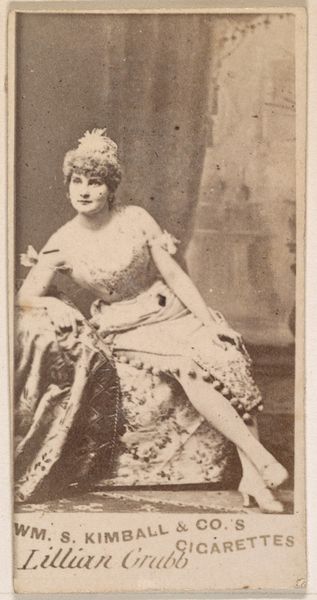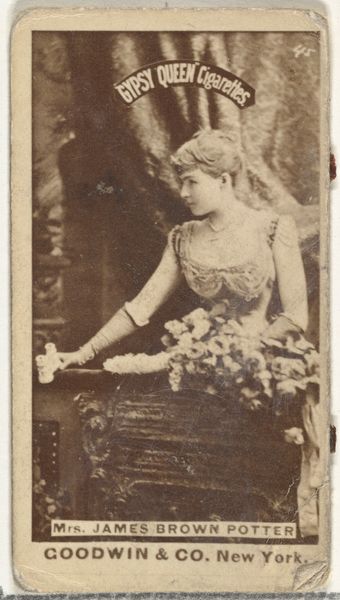
Mary Anderson, from the Actors and Actresses series (N45, Type 7) for Dixie Cigarettes 1885 - 1891
0:00
0:00
drawing, print, photography
#
portrait
#
drawing
# print
#
photography
Dimensions: Sheet: 2 5/8 x 1 1/2 in. (6.6 x 3.8 cm)
Copyright: Public Domain
Curator: This is a piece from Allen & Ginter’s Actors and Actresses series, a trade card featuring Mary Anderson produced sometime between 1885 and 1891. Editor: It's a moody, evocative piece. The sepia tones give it a romantic feel, like a relic from a bygone era. I’m drawn to how staged it feels; everything carefully placed. Curator: Trade cards like these served as advertisements for consumer goods. Collecting them became a craze. What strikes me is how Anderson's image was mobilized within this developing consumer culture. She’s not just an actress, she's a commodity herself, a face selling Dixie Cigarettes. Editor: Indeed. Let's look at the iconography. We have Ms. Anderson posed within what looks like a grotto or a theatrical set, a backdrop hinting at classical gardens, Roman arches and classical plays no doubt. Her long braided hair is striking – in what way might this relate to perceptions of female beauty at the time? Curator: Hair became quite fetishized, and classical and medieval visual tropes had real cultural purchase during this period, and were used in a number of art works. Beyond aesthetics, there’s something performative about her posture too. Editor: Yes, she seems caught in a moment of reflection, her gaze distant. Perhaps echoing a role she was famous for. The cigarette company were obviously aware of the impact a famous figure such as Mary Anderson could have upon their sales. She becomes a symbolic vehicle, doesn’t she? Beauty, fame, luxury... all rolled into one appealing image. Curator: Exactly. Her celebrity status lent an aspirational quality to the product, especially considering how new cigarette culture was for general consumption, it still needed a social cache, a signifier of aspiration. What I find really telling is how seamlessly her identity as an actress blends into this promotional function. She, her talent, her very persona, is the selling point. It reveals the power of celebrity image-making in this burgeoning consumer society. Editor: And seeing it now, it reminds us how potent images and cultural figures still are in selling us aspirations and shaping social values even today. Curator: Agreed. Considering its context within the late 19th century, it’s really an interesting artifact of both early advertising and popular theater history.
Comments
No comments
Be the first to comment and join the conversation on the ultimate creative platform.


